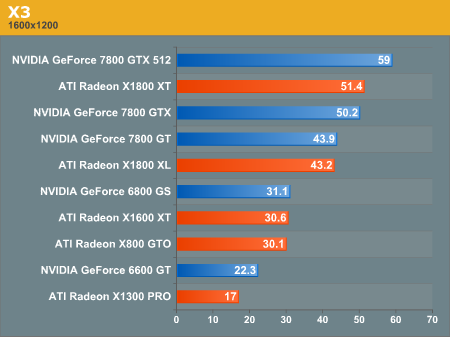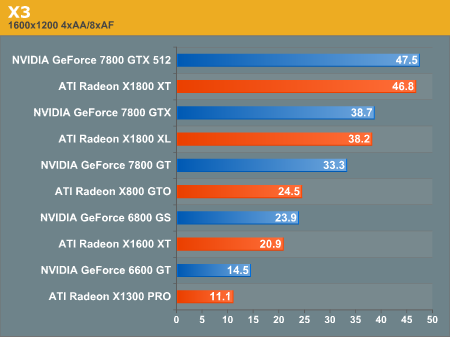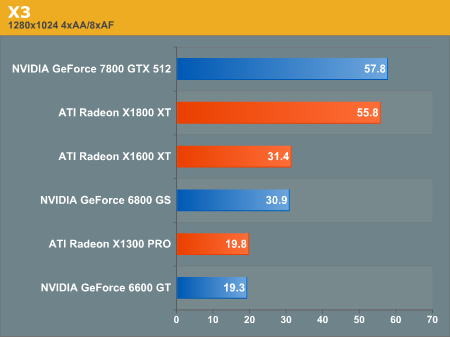
Original Link: https://www.anandtech.com/show/1931
Introduction
Much of the focus in PC gaming these days is centered around action-oriented games and first-person shooters. While we are very much into these kinds of games, we are always interested in the different kinds of game genres there are out there. Games like Battlefield 2 and F.E.A.R. seem to be the types of games as of late that compel most gamers to upgrade their graphics hardware, but we've been lucky to see some strategy and simulation-type games (i.e. Black and White 2) that also make good use of some of the high end cards available now.
One genre, which gamers tend to either love or hate, is the space simulation. Of course, there are varying degrees of these types of games, with one end being fluffy Star Wars/Star Trek type games and the opposite end being games like EVE Online and Homeworld 2. Games like EVE Online, in particular, are incredibly open-ended and include features like complex in-game market systems and economies as well as industry and combat elements, all in a massively multiplayer online world.
Recent space simulation games tend to rely more heavily on graphics than in the past, and as technology has improved, so has the looks of these games. Arguably one of the best looking space sims out now is the newly released installment of the X series, X3: Reunion. While not an online multiplayer simulation game, it still features open-ended gameplay that has a lot to offer.

X3 Reunion
Egosoft is most known for a series of space simulation games based on the X universe, X: Beyond the Frontier, X2: The Threat, and their most recent X3: Reunion. The storyline in X3 continues where X2 left off, with the threat of an invading alien race in the X universe. Originally, Egosoft was going to offer an expansion pack for X2, but it eventually evolved into a sequel. While there is a storyline, the game has a "sandbox" type feel, in that the game can be played in other ways than just completing missions associated with the storyline.

While there were some technical issues with X3 when it was first released, specifically with massive frame rate drops during the game, the X3 rolling demo runs very smoothly and without any bugs. The demo incorporates the four major aspects of the game (fight, trade, build, think) in order to reflect gameplay accurately. The scenes are very similar in style to X2's demo, with multiple ships of different sizes flying around, orbiting structures, sometimes battling each other. This is all set in front of an impressive space setting with beautifully rendered planets and stars, as well as the realistic-looking explosions from the ship battles. All of these images combine to create a very effective and immersive future-space environment.
Performance Tests
We found that the X3 rolling demo makes a good benchmark due to its excellent graphics. The benchmark is fairly long and covers many different aspects of the game like fighting and building complex structures. In addition to being able to adjust standard settings like resolution and AA/AF, there are high, medium and low options for both shader and texture quality. There is also a handy feature that sends a breakdown of the details of the different scenes in the demo to a file for reference. These details include average, minimum and maximum frame rates for each scene in the demo, as well as the settings enabled for the benchmark. We ran several tests with X3 to see the kind of results that we would get across a range of NVIDIA and ATI cards. Here is the list of cards as well as the system that we tested:
| Testbed | |
| Processor: | AMD Athlon 64 FX-55 Processor |
| Memory: | 2x512MB OCZ 2-2-2-6 1T DDR400 RAM |
| Motherboard: | SI K8N Neo4 Platinum/SLI |
| Hard Drive: | Seagate 7200.7 120 GB |
| Power Supply: | OCZ 600 W PowerStream |
| Graphics Card: | NVIDIA 6600 GT NVIDIA 6800 GS NVIDIA 7800 GT NVIDIA 7800 GTX NVIDIA 7800 GTX (512) ATI X800 GTO ATI X1300 Pro ATI X1600 XT ATI X1800 XL ATI X1800 XT |




The interesting thing that we see here is how close together all the numbers are. It's also interesting to see that X3 seems to favor both ATI and NVIDIA hardware in the same manner, as NVIDIA does better in general by only a few frames. Overall, the results are somewhat eerie given that each card on one side of the ATI/NVIDIA line gets a very similar frame rate to its competition on the other side. This means that the X3 rolling demo will probably make a very well-rounded addition to our performance benchmarks for future reviews.
We also wanted to see how CPU intensive X3 was on our system, so we tested the game on our highest performing card (7800 GTX 512) with both our standard 2.6GHz processor (AMD Athlon FX-55) and a slower 1.8GHz processor (the FX-55 with a multiplier of 9 to simulate a slower processor). This helps us get a better idea of how much CPU speed affects performance in the game.
| Processor | AA/AF | Resolution | Performance |
| 2.6GHz | Enabled | 1600x1200 | 47.5 |
| 1280x1024 | 57.8 | ||
| Disabled | 1600x1200 | 59.0 | |
| 1280x1024 | 63.8 | ||
| 1.8GHz | Enabled | 1600x1200 | 44.9 |
| 1280x1024 | 49.5 | ||
| Disabled | 1600x1200 | 50.4 | |
| 1280x1024 | 50.8 |
As illustrated, what is most noticeable here is that without AA enabled, the benchmark's frame rate on the 1.8GHz system is almost exactly the same between the two resolutions. Even when AA is enabled at 12x10, we are still CPU bound. This means that, in general, lower speed processors will have a large impact on framerate for higher end graphics cards. Even our high end CPU was limited with high end graphics cards plugged in, making this game a good CPU benchmark as well as a good GPU test. People with mid-range GPUs probably won't need anything more than an entry level current generation Athlon 64 for good performance - after all, we will never run into the CPU limit if the graphics card isn't fast enough to outpace the CPU when running X3.
Final Words
Overall, X3 Reunion looks like a decent game, but more importantly for our purposes, it looks to make a pretty good performance benchmark. The new graphics look is significantly better than the previous X2 graphics, thanks to a new engine. Whether or not this is your type of game, it looks very impressive, and with the latest graphics technology, including SM 3.0 support, it will definitely put your graphics card to the test.

At AnandTech, it is important for us to have a wide variety of games to test when looking at hardware performance, and games like these are always a welcome addition to our benchmarks. The X2: The Threat rolling demo was a benchmark that we routinely used for our card roundups in the past (before it became technologically out of date), and now, it will be replaced by the graphically superior X3 rolling demo. We will definitely be using this as a benchmark for future testing, as it represents the next generation of game graphics suitable for testing the higher-end cards and systems.
We've also seen how the processor speed factors in to the X3 benchmark. With graphics cards capable of moderately high framerates, you will get the best performance in X3 on a system with a good processor. Because of the CPU limitation, the X3 demo would make a good CPU benchmark as well as a graphics card benchmark, further adding to the usefulness of the game as part of our test suite.

It's refreshing to see the level of quality graphics for a game like this, especially given the scarcity of good space simulation games. While X3: Reunion might not be the best game of its type, it is definitely one of the best looking, and is a welcome addition to the genre.







